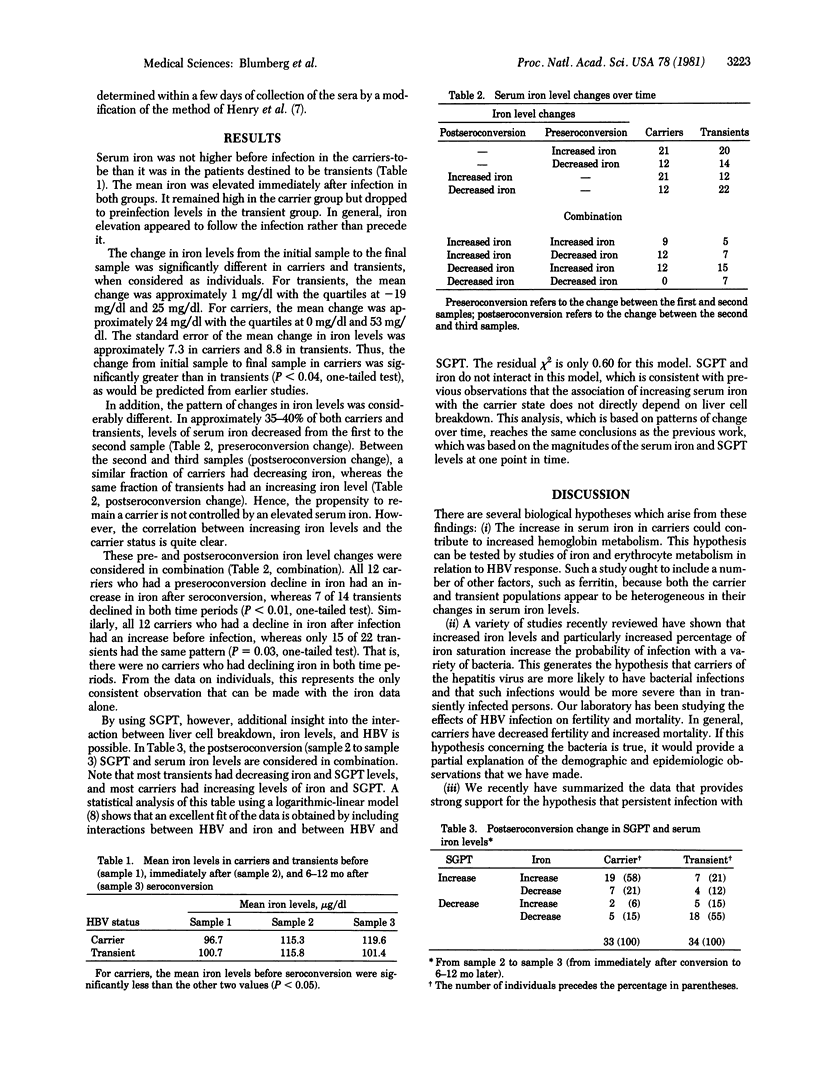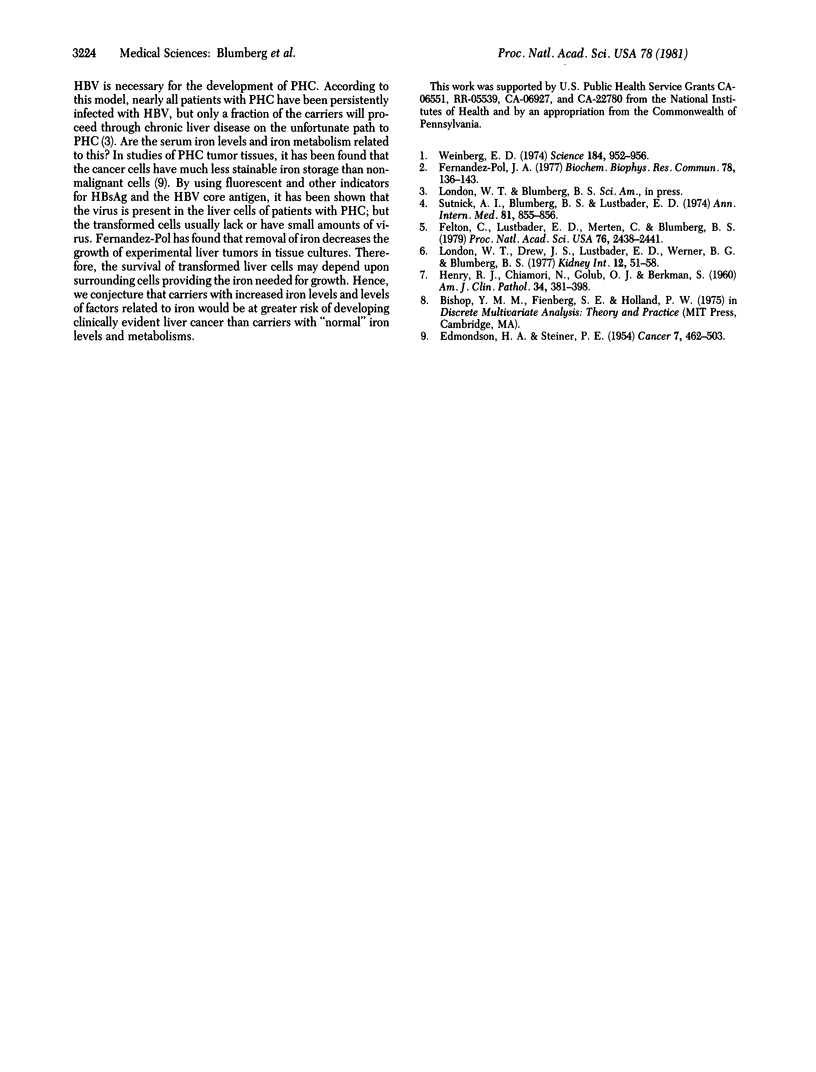Abstract
We found in two previous studies (Down syndrome patients and end-stage kidney patients receiving renal dialysis) that total serum iron is higher on average in carriers of the hepatitis B virus than in those who are not. The elevation of the serum iron is independent of elevations of serum L-alanine:2-oxoglutarate aminotransferase, EC 2.6.1.2) (SGPT), an indicator of liver cell damage. We have followed for 10 yr a large number of patients with end-stage renal disease receiving renal dialysis. In this paper we describe studies of serum iron and SGPT levels in patients (i) 1 mo before infection, (ii) after infection but within the month of infection, and (iii) 6-12 mo after infection. Comparisons of serum iron levels were made between those infected who retained the virus (carriers) and those who rejected the infection (transients). There were no differences between these groups before infection. Serum iron remained high in the carrier group and dropped in the transients. However, not all of the carriers retained high levels, although this was the case in general. Individual changes in the pre- and postconversion period were then considered. All carriers who had a preconversion decline in iron had an increase after infection, whereas this occurred in only some of the transients. Those carriers who had a decline after infection had raised levels before infection, and the decline was generally less than the increase. Consideration of the SGPT and the iron levels together led to the same conclusion as the previous studies, that elevation of iron may be independent of rise in SGPT. Several hypotheses were derived from these findings. Individuals who are carriers in general have higher iron levels and, therefore, are more likely to become infected with bacteria; this may contribute to increased morbidity and mortality. From experimental evidence, iron is required for the growth of tumor cells. Carriers with elevated iron levels may be more likely to develop detectable cancer of the liver than those who do not.
Keywords: iron, hepatitis B, carrier, bacterial infection
Full text
PDF


Selected References
These references are in PubMed. This may not be the complete list of references from this article.
- EDMONDSON H. A., STEINER P. E. Primary carcinoma of the liver: a study of 100 cases among 48,900 necropsies. Cancer. 1954 May;7(3):462–503. doi: 10.1002/1097-0142(195405)7:3<462::aid-cncr2820070308>3.0.co;2-e. [DOI] [PubMed] [Google Scholar]
- Felton C., Lustbader E. D., Merten C., Blumberg B. S. Serum iron levels and response to hepatitis B virus. Proc Natl Acad Sci U S A. 1979 May;76(5):2438–2441. doi: 10.1073/pnas.76.5.2438. [DOI] [PMC free article] [PubMed] [Google Scholar]
- Fernandez-Pol J. A. Iron: possible cause of the G1 arrest induced in NRK cells by picolinic acid. Biochem Biophys Res Commun. 1977 Sep 9;78(1):136–143. doi: 10.1016/0006-291x(77)91231-1. [DOI] [PubMed] [Google Scholar]
- HENRY R. J., CHIAMORI N., GOLUB O. J., BERKMAN S. Revised spectrophotometric methods for the determination of glutamic-oxalacetic transaminase, glutamic-pyruvic transaminase, and lactic acid dehydrogenase. Am J Clin Pathol. 1960 Oct;34:381–398. doi: 10.1093/ajcp/34.4_ts.381. [DOI] [PubMed] [Google Scholar]
- London W. T., Drew J. S., Lustbader E. D., Werner B. G., Blumberg B. S. Host responses to hepatitis B infection in patients in a chronic hemodialysis unit. Kidney Int. 1977 Jul;12(1):51–58. doi: 10.1038/ki.1977.78. [DOI] [PubMed] [Google Scholar]
- Sutnick A. I., Blumberg B. S., Lustbader E. D. Letter: Elevated serum iron levels and persistent Australia antigen (HBsAG). Ann Intern Med. 1974 Dec;81(6):855–856. doi: 10.7326/0003-4819-81-6-855. [DOI] [PubMed] [Google Scholar]
- Weinberg E. D. Iron and susceptibility to infectious disease. Science. 1974 May 31;184(4140):952–956. doi: 10.1126/science.184.4140.952. [DOI] [PubMed] [Google Scholar]


